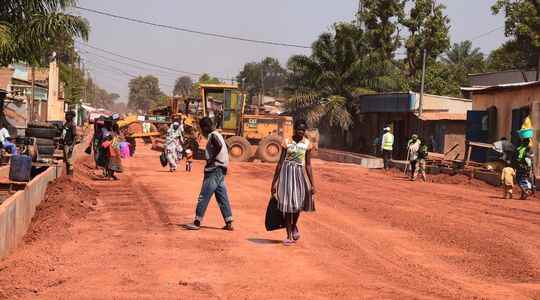Mitteleuropa connects
A few decades ago, to travel the 300 kilometers that separate Prague from Zlin – a small town in the Czech Republic, historic headquarters of the Bata shoe company – it took hours on bumpy roads. Since the accession of the countries of central Europe to the EU, road infrastructures have largely evolved, thanks to European funds. It is even, in the opinion of the experts, one of the greatest benefits derived from it by the former Mitteleuropa (Czechoslovakia, Slovakia, Hungary, Poland, etc.). Admittedly, some East-West connections have yet to be built. Thus, the section of the Polish expressway S3 Bolkow-Lubawka is already built, while the works for the D11 motorway, in the Czech Republic, to make the junction, should not begin until 2023. To the point that the Czech authorities worry, a minister having gone so far as to declare that the Poles were building so quickly that they risked finding themselves, at the edge of the border, in a field of sunflowers…
About 3,000 kilometers of roads and motorways were built in Poland between 2003 and 2008. The authorities assure that the country will be one of the best equipped in Europe in terms of road infrastructure by 2030 and will become a hub of attraction for investors in medium-sized towns. A way to erase strong regional disparities and bring greater cohesion to the country. Poland is particularly banking on economic development along the corridor formed by the S5 expressway, in the south-west, which will link Wroclaw to Poznan and will go to the port of Gdansk, in the north, via a junction with the A1 motorway. . Other connections will also make it possible to reach the industrial region of Silesia. In this regard, Eurovia Polska will build a new part of national road 75 (and European road E75) on the Brzesko-Nowy Sacz section (in southern Poland). Similarly, in the Czech Republic, the consortium made up of Vinci Highways and Meridiam concluded last April the financial package for the PPP contract for the D4 motorway linking Pribram (Central Bohemia) to Pisek (South Bohemia). This new motorway link will improve the connection between Prague and the rural region of South Bohemia, as well as traffic on the major economic axes, in particular to Germany and Austria.
The Central African Republic seeks to open up
Ribbons of red earth against a backdrop of lush vegetation, the roads of the Central African Republic (CAR), a country of 4.5 million inhabitants in the center of the continent, are not easy. Already poorly endowed with road infrastructure, the former French colony is currently mired in violence between government and rebels. What degrade a little more the rare arteries and bridges and penalize the economic activity as well as the exchanges, inside the country as with the neighbors. But that does not prevent the State from thinking about the future, with the help of the European Union. In July 2014, the EU launched a multi-donor fund, the Bêkou (“Hope”, in the Sango language), with an initial budget of 64 million euros, in order to improve access to food, water and care, and to resume activity as soon as the security situation has stabilized. With this in mind, roads are essential. Especially since they also ensure the mobility of the Minusca, the UN troops responsible for the protection of civilians and humanitarian aid.
Following several missions, the teams of Expertise France, the public agency for the design and implementation of international technical cooperation projects, have drawn up an inventory and carried out soil studies for the feasibility of works of development. Some 22 sites have been identified, on which, among other things, portable prefabricated bridges have been installed. In addition, the agency conducted a study for the construction of a structure to replace a bridge in Bangui, the capital. A strategic axis, since it serves as a gateway for the supply of goods, via Cameroon.
Coming to term at the end of 2021 – even if a new phase of cooperation between the EU and the CAR should extend it until 2027 – the Bêkou fund has already benefited, as a whole, more than half of the population. , according to the Ministry of Planning. And today, the CAR is launching studies for the construction of a bridge over the Oubangui River, between Bangui and Zongo, in the Democratic Republic of Congo (DRC). Similarly, it is actively developing the missing links of the Bangui-Kisangani-Kampala and Kisangani-Bujumbura road corridors. Objective: to provide access to new markets for the Central African economy, which depends on Cameroon, through which 80% of its exports and imports transit, and to strengthen trade between CAR, DRC, Burundi and Uganda.
